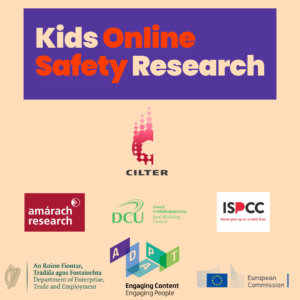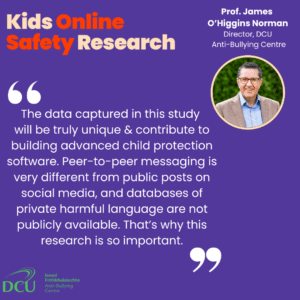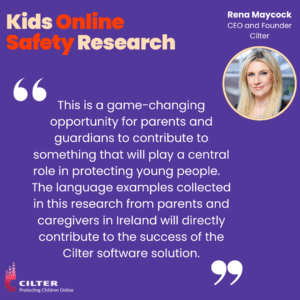#BeKindOnline – Safer Internet Day 2021
To mark Safer Internet Day, the Irish Safer Internet Centre invite you to the launch of the #BeKindOnline Webinar Series on Tuesday, 9 February at 2pm.
Register for the Safer Internet Day 2021 Launch Event
Launch Event
Minister for Justice, Helen McEntee TD, will deliver the opening remarks to launch Safer Internet Day 2021 before commencing Coco’s Law, or the Harassment, Harmful Communications and Related Offences Bill.
Professor Brian O’Neill (member of the National Advisory Council for Online Safety) will then host a panel discussion with the Irish Safer Internet Centre partners, including:
- Chief Executive of ISPCC Childline, John Church;
- CEO of the National Parents Council Primary, Áine Lynch;
- Project Officer of Webwise (PDST Technology in Education), Jane McGarrigle; and
- Chief Executive of Hotline.ie, Ana Niculescu
#BeKindOnline Webinar Series
As part of Safer Internet Day, the Irish Safer Internet Centre will also host a series of webinars to help keep you and your families safe online:
Tuesday, 9 February: 7.30pm-8.15pm
- Title: Empowering Healthy Online Behaviour in Teenagers
- Guest Speaker: Dr Nicola Fox Hamilton, Cyberpsychology Researcher, member of the Cyberpsychology Research Group at the University of Wolverhampton and lectures in Cyberpsychology and Psychology in IADT, Dun Laoghaire.
- Audience: This webinar is for parents of teenagers.
- Register: here
Wednesday, 10 February 7.30pm-8.15pm
- Title: Empowering Healthy Online Behaviour in Younger Children
- Guest Speaker: Mark Smyth, Consultant Clinical Psychologist
- Audience: This webinar is for parents of younger children.
- Register: here
Thursday, 11 February 7.30pm-8.15pm
- Title: Empowering students to build digital resilience and manage their online wellbeing
- Guest Speakers: Jane McGarrigle and Tracy Hogan (Webwise)
- Audience: This webinar is for teachers, educators, school leaders and education stakeholders.
- Register: here
About the Irish Safer Internet Centre
The Irish Safer Internet Centre exists to promote a safer and better use of the internet and digital technologies among children and young people. Co-ordinated by the Department of Justice, the Irish Safer Internet Centre partners are:
- ISPCC Childline: www.ispcc.ie/childline
- National Parents Council Primary: www.npc.ie/primary
- Webwise (PDST Technology in Education): www.webwise.ie
- Hotline.ie: www.hotline.ie
We look forward to welcoming you.


